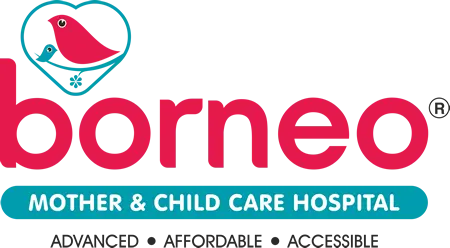What Is Anencephaly And How Prevalent Is It Among Infants?
Anencephaly is a rare birth defect that affects the development of the brain and skull of a fetus. It occurs in approximately 1 out of every 10,000 pregnancies and is one of the most common neural tube defects. Anencephalic babies are born with an underdeveloped brain and often have parts of their skull missing. It is a serious condition that is usually fatal within hours or days after birth. Despite this, it has been estimated that up to 8% of all stillborn infants may have had anencephaly at some point during their development. This article will discuss what anencephaly is, its prevalence among infants, as well as possible causes and treatments for this condition. Anencephaly is characterized by the underdeveloped brain of a fetus.
Anencephaly results in children being born with an undeveloped cerebellum, which is located on the bottom front portion of your brain. This cerebellum is responsible for many functions such as equilibrium and muscle coordination. Without it, children with anencephaly often have difficulty moving and are also unable to manage basic reflexes such as blinking or swallowing due to their lack of balance or coordination.
Overview of Risk Factors During Pregnancy That Can Lead to Anencephaly in Babies
Anencephaly is the absence of parts of the cranial vault or skull, either partially or entirely. In this particular case, the neural tube (the area where the embryo develops) fuses and does not develop correctly. This results in a lack of formation of the cerebral hemispheres and basal ganglia which are crucial to brain function. Neural tube defects are one type of birth defect that can occur before a baby is even born and result in miscarriage or stillbirth.
Other types include cardiovascular, musculoskeletal, ophthalmological and genetic abnormalities. The incidence appears to be increasing due to environmental factors and the age of pregnant women. It is the most severe neurulation disorder, due to the lack of formation of cerebral hemispheres and basal ganglia.
Anencephaly can cause severe disability or death in newborns and is one of the most common neural tube defects, affecting approximately 1 in 4,859 pregnancies each year. While there are many risk factors that can lead to anencephalic fetuses, understanding these risks can help pregnant women make informed decisions to reduce their baby’s risk of developing this condition.
Pregnancy can increase the risk of developing anencephaly due to the following factors:
● Maternal age is one of the most common risk factors for anencephaly, and it has been linked to a change in cell division that occurs during fetal development.
● Intrauterine growth restriction (IUGR) is another relatively common risk factor for anencephaly, which is abnormal fetal growth that may cause incomplete development of neural structures, such as the brain. Interventions such as physical activity are being studied for their effects on reducing IUGR in pregnant women.
● Genetic factors associated with anencephaly include the following: known as microdeletions and duplications, which are found in three to four percent of the population. These genetic factors may cause defects in cell division during fetal development.
● Environmental exposure to chemicals known as teratogenic agents also may increase a woman’s risk for developing anencephaly, such as prenatal exposure to drugs like alcohol and cocaine. There is limited research on the effects of exposure to these drugs on developing neural tissue during fetal development.
What Are The Signs and Symptoms of Anencephaly in Infants?
It is important for parents to be aware of the signs and symptoms of anencephaly in infants so that they can seek medical attention if necessary. The signs and symptoms of anencephaly are-
● The early signs of anencephaly can include: a small head size, with flattened facial features; bluish skin color and lack of movement in the limbs. As the condition progresses, physical symptoms will include seizures, feeding difficulties and general delay in development.
Psychological consequences such as hyperactivity may also occur. Some possible causes of anencephaly can include: genetic abnormalities such as neural tube defects (NTDs), oligohydramnios, or exposure to toxins or drugs during pregnancy.
What are potential causes of anencephaly ? The causes of anencephaly can include genetic abnormalities such as NTDs, oligohydramnios, or exposure to toxins or drugs during pregnancy.
Other potential causes may include infections such as rubella and cytomegalovirus in the mother.
What are some other possible outcomes for infants born with anencephaly?
Babies born suffering from anencephaly may have seizures, feeding difficulties and general delay in development. Psychological consequences such as hyperactivity may also occur.
Diagnosis & Treatment Options for Pregnant Women with a High Risk for Anencephaly
Pregnant women who are at high risk for anencephaly must be closely monitored throughout their pregnancy for early diagnosis. Diagnosis of anencephaly can be done through ultrasound or amniocentesis, which can detect the presence of neural tube defects in the fetus.
Once diagnosed, pregnant women with a high risk for anencephaly should discuss their treatment options with their doctor. Treatment options may include termination of pregnancy or delivery by cesarean section, depending on the severity and stage of development of the anencephalic fetus.
It is important to seek medical advice as soon as possible to ensure proper diagnosis and treatment for pregnant women with a high risk for anencephaly.


